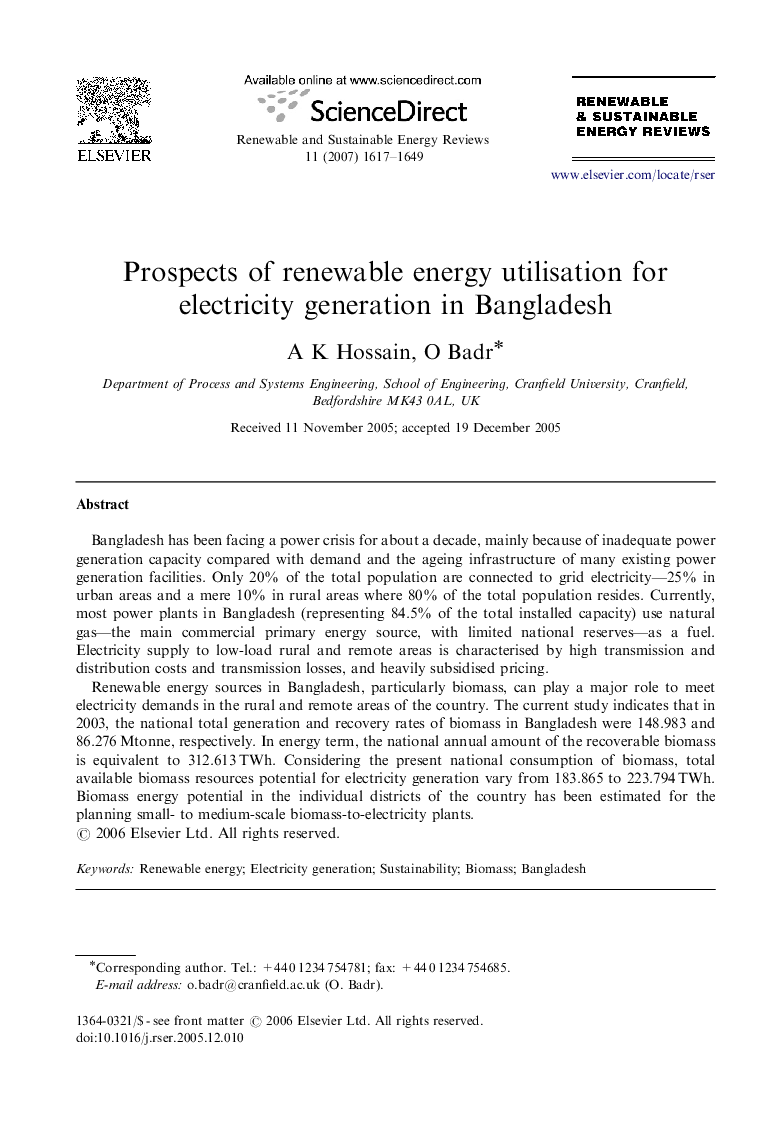| Article ID | Journal | Published Year | Pages | File Type |
|---|---|---|---|---|
| 1751825 | Renewable and Sustainable Energy Reviews | 2007 | 33 Pages |
Bangladesh has been facing a power crisis for about a decade, mainly because of inadequate power generation capacity compared with demand and the ageing infrastructure of many existing power generation facilities. Only 20% of the total population are connected to grid electricity—25% in urban areas and a mere 10% in rural areas where 80% of the total population resides. Currently, most power plants in Bangladesh (representing 84.5% of the total installed capacity) use natural gas—the main commercial primary energy source, with limited national reserves—as a fuel. Electricity supply to low-load rural and remote areas is characterised by high transmission and distribution costs and transmission losses, and heavily subsidised pricing.Renewable energy sources in Bangladesh, particularly biomass, can play a major role to meet electricity demands in the rural and remote areas of the country. The current study indicates that in 2003, the national total generation and recovery rates of biomass in Bangladesh were 148.983 and 86.276 Mtonne, respectively. In energy term, the national annual amount of the recoverable biomass is equivalent to 312.613 TWh. Considering the present national consumption of biomass, total available biomass resources potential for electricity generation vary from 183.865 to 223.794 TWh. Biomass energy potential in the individual districts of the country has been estimated for the planning small- to medium-scale biomass-to-electricity plants.
